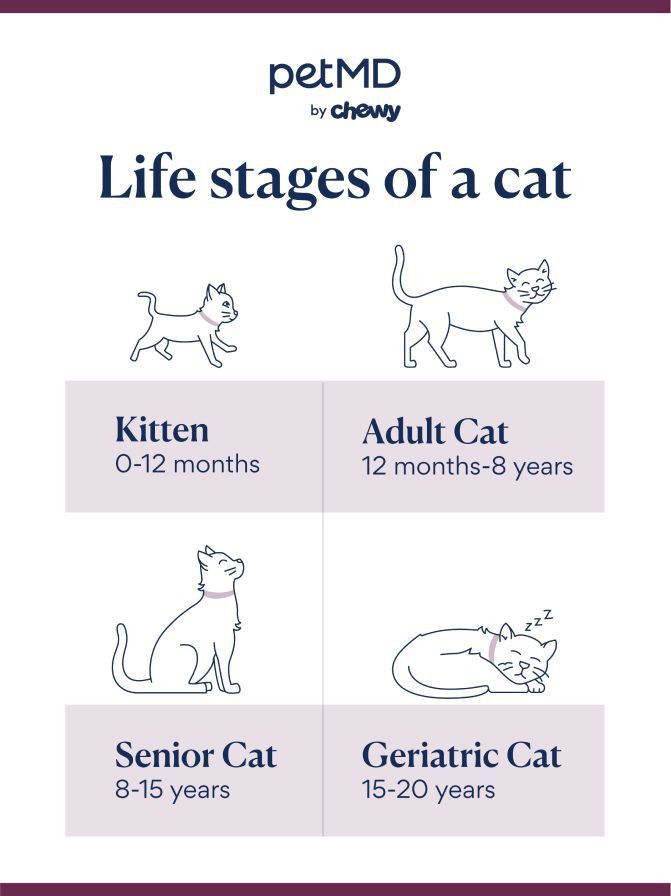Have you ever wondered, “How long will my cat live?” The Expected Lifespan Of A Cat is a common question for cat lovers. The good news is that advancements in veterinary care and nutrition mean our feline friends are living longer than ever. This guide will explore the average cat lifespan, the factors that play a crucial role, and what you can do to help your cat enjoy a long and fulfilling life.
Key Factors Influencing a Cat’s Lifespan
Several elements contribute to how long your feline companion will live. Understanding these factors is the first step in ensuring a long and healthy life for your cat.
- Nutrition: A balanced diet is the cornerstone of a cat’s health. High-quality cat food provides essential nutrients, vitamins, and minerals that support organ function, boost the immune system, and maintain a healthy weight. Proper nutrition from kittenhood through their senior years is crucial for longevity.
- Lifestyle (Indoor vs. Outdoor): A cat’s lifestyle has a significant impact on their lifespan. Indoor cats typically live much longer than outdoor cats. The controlled environment of an indoor home reduces exposure to dangers such as traffic, predators, infectious diseases, and harsh weather conditions. Indoor cats also benefit from consistent access to preventive veterinary care.
- Preventive Veterinary Care: Regular check-ups, vaccinations, and parasite prevention are essential for a long cat lifespan. Vaccinations protect against serious diseases, while routine blood work can detect health issues early, allowing for timely treatment. Preventative medications for fleas, ticks, and heartworms safeguard against parasite-borne illnesses.
- Breed and Genetics: Genetics play a role in a cat’s lifespan. Some breeds, like Siamese, are known for their longevity and fewer breed-specific health issues. Mixed-breed cats often exhibit “hybrid vigor,” leading to greater genetic diversity and potentially fewer inherited health problems compared to purebreds. Conversely, some breeds may be predisposed to conditions that can shorten their lifespan.
- Spaying or Neutering: Spaying or neutering your cat not only helps control pet overpopulation but also significantly contributes to a longer lifespan. Sterilization reduces the risk of reproductive cancers and infections, which are more common in intact cats due to hormonal influences.
 A tabby cat attentively looking upwards, representing the alert and curious nature of domestic felines and their varying lifespans.
A tabby cat attentively looking upwards, representing the alert and curious nature of domestic felines and their varying lifespans.
Indoor vs. Outdoor Cats: A Tale of Two Lifespans
The disparity in lifespan between indoor and outdoor cats is significant. Outdoor cats, unfortunately, face a much shorter average lifespan, often living only half as long as their indoor counterparts. This difference is primarily due to the numerous hazards present in the outdoor environment:
- Infectious Diseases: Outdoor cats are at a higher risk of contracting infectious diseases from encounters with wildlife and other cats. Diseases like feline leukemia virus (FeLV), feline immunodeficiency virus (FIV), and rabies are more prevalent in outdoor populations.
- Trauma: Outdoor cats are vulnerable to injuries from car accidents and predator attacks. Fights with other animals can also lead to serious wounds and infections.
- Parasites: Exposure to fleas, ticks, and intestinal parasites is much greater for outdoor cats. These parasites can transmit diseases and compromise a cat’s overall health.
While supervised outdoor access, such as leash walking or secure enclosures, can offer enrichment for some cats, most felines thrive as indoor-only pets when provided with an appropriately stimulating and enriched indoor environment. Indoor cats avoid many of the dangers faced by outdoor cats, leading to a considerably longer and healthier life expectancy.
Navigating the Nine Lives: Understanding Cat Life Stages
Cats go through distinct life stages as they age, each with unique behavioral and health requirements. Recognizing these stages allows for tailored care that supports your cat’s well-being at every age.
Kitten (0-1 Year): The Foundation Years
Kittenhood is a period of rapid growth and crucial learning. During this stage, kittens explore their world and develop essential social and behavioral skills.
- Nutrition for Growth: Kittens require a diet specifically formulated for growth, as they need more calories and nutrients to support their rapid development. Kitten food ensures they receive the necessary building blocks for strong bones, muscles, and a healthy immune system. Look for food with an AAFCO nutritional adequacy statement for “growth.”
- Socialization and Play: Early socialization during kittenhood is vital for developing a well-adjusted cat. Positive interactions with humans and other animals during this period help kittens become confident and friendly adults. Play is also essential, not just for fun, but for physical and mental development. Engaging play with toys like laser pointers stimulates their minds and bodies.
- Vaccinations and Spaying/Neutering: Kittenhood is when core vaccinations like FVRCP, rabies, and FeLV are administered, building their immune defenses against serious diseases. Spaying or neutering is typically recommended around 6 months of age. This procedure prevents unwanted litters and offers significant health benefits, reducing the risk of certain cancers and behavioral issues like urine spraying.
Young Adult (1-6 Years): The Prime of Life
Young adult cats are in their prime, full of energy and playfulness. While still active, their rapid growth phase has ended, and their nutritional needs shift.
- Adult Cat Food and Weight Management: Transition to adult cat food to meet their reduced calorie needs and prevent weight gain. Maintaining a healthy weight in young adulthood is crucial for preventing future health problems like arthritis and diabetes.
- Continued Preventive Care: Even in this robust stage, annual veterinary check-ups and booster vaccinations are important. While young adults are generally healthy, certain conditions like asthma and feline lower urinary tract disease (FLUTD) can emerge. Early detection through routine exams and baseline bloodwork can lead to more effective long-term management.
Mature Adult (7-10 Years): Subtle Shifts
Mature adult cats may start to show subtle signs of slowing down. They might be less active than before and transition to a more sedentary lifestyle.
- Monitoring for Age-Related Changes: Be observant for changes in behavior, such as altered litter box habits or nighttime activity levels. Some mature cats may become more active at night or experience changes in bathroom habits. These could be early indicators of conditions like arthritis, cognitive dysfunction, or kidney issues.
- Annual Bloodwork and Dental Care: Routine bloodwork becomes even more important in mature adulthood to monitor kidney, liver, and thyroid function. Pay close attention to dental health. Dental cleanings may be recommended by your veterinarian at this stage, especially if home dental care isn’t consistent. Daily tooth brushing and dental treats can help maintain oral hygiene.
Senior (11+ Years): The Golden Years
Cats aged 11 years and older are considered seniors. This stage can vary greatly; some senior cats remain active and playful, while others experience more age-related health issues.
- More Frequent Veterinary Check-ups: Semi-annual veterinary check-ups, including bloodwork and urine testing every six months, are recommended for senior cats. Organ function can change rapidly in older cats, and early detection of problems is crucial.
- Addressing Age-Related Conditions: Senior cats are more prone to conditions like arthritis and high blood pressure. Monitor for signs of slowing down, stiffness, or changes in mobility, which could indicate arthritis. Blood pressure monitoring should be part of routine check-ups as hypertension can lead to serious complications. Joint supplements can be beneficial for supporting joint health and mobility.
Extending Your Cat’s Lifespan: Practical Steps
While we cannot guarantee immortality, there are many proactive steps you can take to maximize your cat’s lifespan and quality of life:
- Stay Current on Vaccinations: Adhere to your veterinarian’s recommended vaccination schedule. Vaccinations are crucial for preventing preventable and potentially fatal diseases, even for indoor cats.
- Spay or Neuter Early: Spaying or neutering at a young age offers significant health benefits and contributes to a longer life by reducing the risk of reproductive diseases and cancers.
- Commit to Consistent Preventative Care: Annual veterinary check-ups and routine blood tests are vital for early disease detection. Discuss any changes in your cat’s behavior, no matter how minor, with your vet.
- Adapt Your Home Environment: As cats age, modify their environment to meet their changing needs. Consider joint supplements if you notice stiffness or slowing down. Provide orthopedic beds for extra support and comfort. Ensure easy access to food, water, and litter boxes, especially for senior cats with mobility challenges.
By understanding the factors that influence cat lifespan and committing to proactive care throughout their lives, you can significantly increase the chances of your feline friend living a long, healthy, and happy life by your side.
WRITTEN BY: Content Creator at solcat.net (Utilizing information from Dr. Jamie Lovejoy, DVM, Veterinarian at petmd.com)


